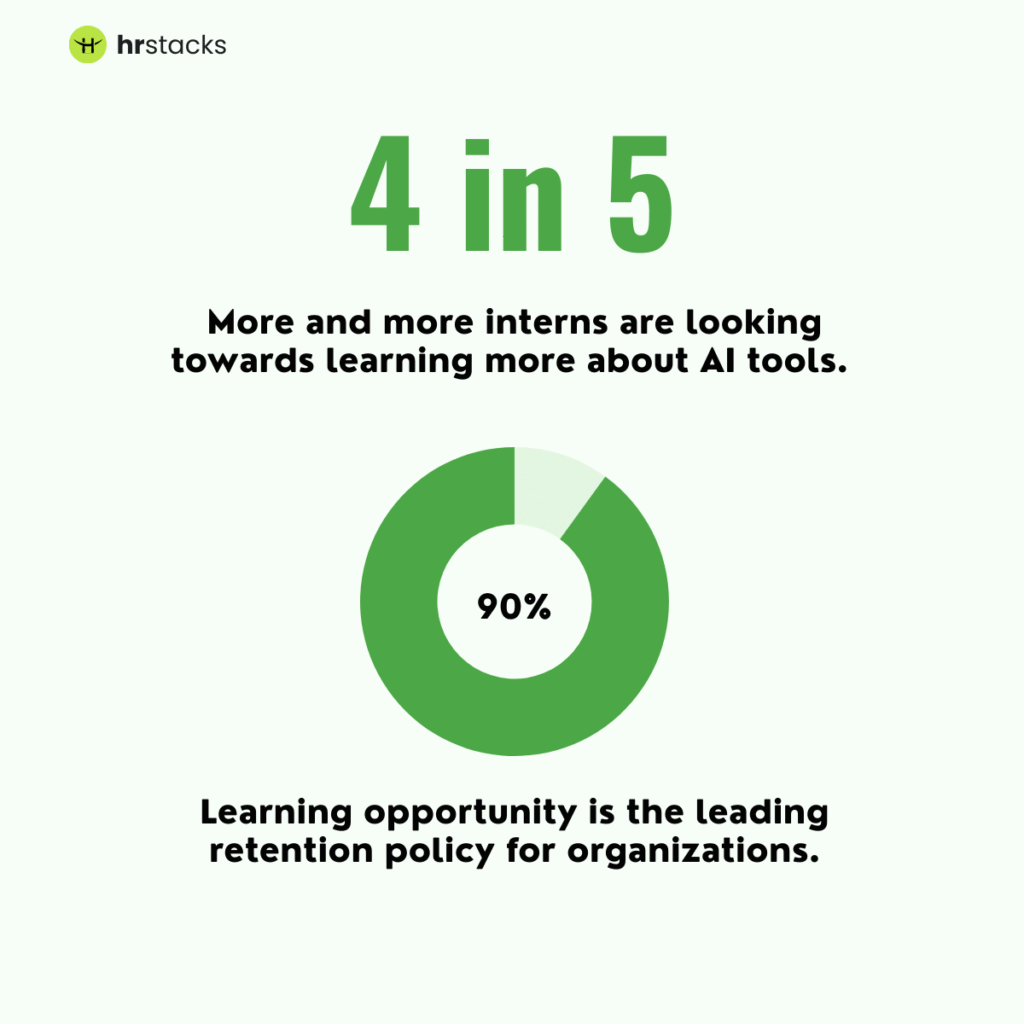Internships are the closest thing many students get to a real job audition; short, noisy, and oddly revealing. Employers still hire from their intern pools, but they’re pickier than they used to be: recent NACE data shows employers extended full-time offers to roughly 62% of their 2024 intern classes, a noticeable dip from prior years.
What are hiring teams watching for? Recruiters name problem-solving, teamwork, and clear communication as the top traits they want to see on early-career résumés, so it’s not enough to be “bright”; you have to show how you think and how you work with others.
There’s another, quieter reality: teams are stretched and engagement levels aren’t high, so an intern who reliably finishes work, asks smart questions, and improves after feedback stands out fast. Gallup’s engagement data helps explain why steady, helpful behavior gets noticed.
This article breaks down ten practical qualities, such as reliability, coachability, initiative, and basic digital fluency, and shows how interns can demonstrate them and how managers can set simple structures to surface real potential (SHRM’s internship guidance is a helpful reference).
The 10 qualities
Below is a list of the top 10 qualities of an effective intern:
- Reliability
- Curiosity
- Clear Written Communication
- Coachability
- Time Management That Protects Quality
- Initiative
- Problem Solving With Receipts
- Team Spirit
- Professional Integrity
- Digital Fluency, Including Responsible AI Use
1. Reliability: The Foundation of Trust
Reliability is the first thing managers look for in an intern, and it’s surprisingly rare. It’s not about brilliance; it’s about being the person who does what they said they would do. Reply when you can’t hit a deadline, keep a clean to-do list, and share a quick end-of-day update. Those small habits show people they can count on you.
One of the best interns I worked with kept a running checklist in Google Docs that anyone on the team could peek at. No chasing, no guesswork, we always knew where things stood. Because she made our jobs easier, she quickly earned bigger projects.
That’s the hidden truth: reliability earns trust, and trust is what unlocks real opportunities.
2. Curiosity That Adds Value (Not Noise)
Curiosity matters, but restraint makes it useful. The sweet spot is doing a quick sweep of available documents or past tickets, then bringing one focused question that reveals context rather than ignorance.
That approach signals initiative and respect for others’ time. Practically, an intern might read a previous retro, shadow two meetings, and prepare a one-page “what I learned” with two clarifying questions.
Employers consistently prioritize problem-solving and contextual understanding when evaluating early-career talent, so curiosity that’s disciplined becomes evidence of thoughtful contribution rather than a drain on colleagues.

3. Clear Written Communication
Most modern work lives in text: tickets, briefs, chat, and handoffs. Clear written updates reduce back-and-forth and accelerate decisions. Interns should practice concise subject lines that include the action and deadline, and short updates that follow a simple order, such as context, what was done, and what’s needed, so recipients can act quickly.
Documentation of steps, even when imperfect, is a force multiplier: it helps the team avoid repeat questions and shows you value other people’s time. Recruiters routinely scan for written communication skills; making clarity visible in everyday artifacts strengthens an intern’s professional signal.
4. Coachability: Turning Feedback Into Growth
Coachability is turning feedback into forward motion without defensiveness. It starts with active listening, restating the guidance to confirm understanding, and ends with visible iteration: deliver a revised draft or an improved process, then point to the change.
Managers value this because coachable interns compound their impact across the internship: small corrections early lead to bigger autonomy later.
In practice, schedule brief weekly check-ins, ask one targeted question after feedback, and keep a short log of before/after samples to show progress. Learning agility, shown through coachability, is often the best predictor of future performance.
5. Time Management That Protects Quality
Internships are compressed learning loops. Good time management isn’t about filling every minute; it’s about protecting focused blocks to produce work of value. Estimate tasks aloud, “two hours for data pull, one hour QA, 30 minutes summary”, and plan around dependencies.
When priorities shift, narrate your trade-offs to stakeholders: “If I move A to tomorrow, we can ship B today; confirm?” That transparency builds trust and treats planning as a collaborative act, not a private hope.
Effective time management helps interns deliver consistent, quality work instead of reactive, surface-level outputs. Gallup’s engagement data helps explain why steady, focused contributors stand out.
6. Taking Initiative Without Overstepping
Initiative is acting to remove friction, but smart initiative understands scope and approvals. Fixing a broken link in a safe branch, drafting an FAQ from repeated customer questions, or proposing a small experiment with clear metrics are examples that help rather than interrupt.
Teams notice when interns reduce overhead; those interns move from summer support to reliable contributors. Given the variation in conversion rates from internship to hire, proactive, low-risk contributions often become the deciding factor between candidates who are merely present and those who become teammates.
7. Problem-Solving With Receipts
Problem-solving means showing your working, not just the outcome. Before escalating, try a few plausible fixes, consult internal docs, and test a hypothesis; then present the concise trail of what you tried and the recommended next step with trade-offs.
That format helps busy colleagues assess your judgment quickly and keeps decision cycles short. Employers place problem-solving at the top of the list when assessing early-career talent; interns who reveal their thinking look like someone who can scale into more complex tasks. Clear, testable options beat vague concerns every time.
8. Team Spirit: Making Collaboration Easier
Team spirit is practical: share credit, surface risks early, and remove small blockers for others. It isn’t self-promotion; it’s making collaboration smoother. Examples include offering to draft alt text for a designer or consolidating a list of recurring questions for the support team.
In hybrid settings, quiet dependability has outsized value because remote teams lose incidental context. When engagement is low, a steady, helpful presence becomes highly visible and immediately useful. That’s how interns become memorable, not for big speeches, but for reliably making someone else’s week easier.
9. Professional Integrity
Professional integrity is the baseline that allows employers to expand responsibility. It includes respecting data permissions, protecting confidential information, and owning mistakes with a proposed fix.
An intern who flags a permissions issue rather than accessing data they shouldn’t, or who reports an error promptly with remediation steps, builds trust quickly. That trust leads to more substantive assignments because managers worry less about risk.
In short: integrity short-circuits micromanagement and opens doors to actual work that matters. SHRM materials on internship design emphasize the importance of clear expectations and governance for these behaviors.
10. Digital Fluency, Including Responsible AI Use
Digital fluency is basic tool competence plus an understanding of appropriate automation. The standout interns use productivity and research tools to speed routine work, then apply human judgment for decisions and quality control.
For instance, generating three headline options with an AI assistant and then editing to match brand voice is good practice; relying on the tool without verification is not.
L&D research shows organizations are prioritizing human skills alongside digital capabilities, so the combination matters: speed from tools, judgment from people. Clear guardrails on where AI is acceptable help teams maintain quality and compliance.

A Brief Guide For Interns
This short guide gives interns a practical checklist, simple habits, and daily rituals to turn summer tasks into visible wins. It focuses on actions you can start this week: reliable updates, targeted questions, and small, ship-able contributions that teams notice.
Managers will find quick, easy ways to structure feedback and meaningful work so the internship becomes a clear audition for future roles.
- Send short, consistent updates: People remember reliability they can feel.
- Document as you go: A shared running doc beats three DMs and a confused thread.
- Ask one good question a day: That’s 40-60 questions over a summer, enough to change your understanding.
- Ship something small by the end of week one: A cleaned-up spreadsheet, a fixed link, a clarified SOP. Momentum is a story you can tell in your week-two check-in.
- Keep a “wins” file: Screenshots of shipped work, feedback quotes, before/after snapshots. Handy for your final presentation and your resume.
A Brief Guide For Managers
If you’re hosting interns, a little structure goes a long way. SHRM’s internship toolkit has a useful reminder list: clear goals, meaningful work, consistent supervision, and compliance basics.
In practice: give interns a named project with a real outcome, a weekly cadence for feedback, and access to the people they’ll need.
- Define success on day one: By week 6, we want a refreshed FAQ, validated with 5 customer interviews.
- Normalize micro-updates: Ask for the two-line daily summary; it keeps everyone honest about progress and blockers.
- Make feedback routine, not dramatic: Five minutes at the end of your 1:1: One thing you did well; one thing to change next time.
- Give interns a chair at the table early: One planning meeting, one customer call, one retro. Context now saves time later.
- Plan a showcase: A short presentation or demo in the final week motivates focus and gives the intern a portfolio artifact.
What This Means For Converting Interns To Hires
Conversion from intern to hire often comes down to the steady signals you send, like reliability, coachability, and clear communication, that matter more than a single flashy deliverable.
For interns, that means practicing those behaviors consistently; for employers, it means judging candidates on visible learning curves and cross-functional feedback, not just results.
A few practical notes for both sides:
Interns:
Offers aren’t purely about output. They’re about the signal you send, like dependable, curious, easy to work with, and improving every week. That’s what helps a team picture you at your desk in October. The data is clear that not every intern gets an offer; being the person who reduces friction can tip the scales.
Employers:
The two best predictors I’ve seen: (1) a visible learning curve in weeks 2-4, and (2) the quality of cross-functional feedback. Ask peers, not just the direct manager. NACE’s reporting on student intent to accept offers is a reminder that when you create a good experience, interns want to stay. Treat the program as a pipeline, not a summer favor.
A Quick Summary Table
| Use AI for drafts, verify in the source | What to do this week | How managers can help |
| Reliability | Start daily 2-line updates | Share a simple template and expected times |
| Curiosity | Read two docs before asking; bring one question | Give a “start here” doc stack and a buddy |
| Communication | Use Context → Action → Ask | Model it in your own emails and tickets |
| Coachability | Restate feedback; show a v2 | Give one small, fast feedback cycle per week |
| Time management | Estimate in hours; block focus time | Help re-prioritize in 1:1s |
| Initiative | Fix a small thing; open a PR | Keep a list of “backlog gems” safe for interns |
| Problem-solving | Try, document, then ask | Reward process, not just the “right” answer |
| Team spirit | Offer help on dependencies | Invite interns to key cross-team forums |
| Integrity | Flag risks; own mistakes with a fix | Set data access rules in writing |
| Digital fluency | Use AI for drafts and verify the source | Clarify where AI is welcome and where it’s not |
Final Note
Not every student gets an internship. Gallup found that only about 41% of college students have had one while enrolled, and it’s even less common for first-generation or public university students. Internships are often gated by access.
The ten qualities we’ve unpacked aren’t fixed traits; they’re ways to act, to earn trust, and turn a handful of weeks into a lasting impression. And if you’re on the other side, designing a program, remember that structured internships remain one of the clearest pipelines for hiring potential.
The interns who stick aren’t the loud ones or the network-born; they’re the ones who learn fast, smooth handoffs for others, and make the team better. You don’t need to arrive fully formed. Pick a couple of behaviors, turn them into habits, and let the compound effect do the rest.









